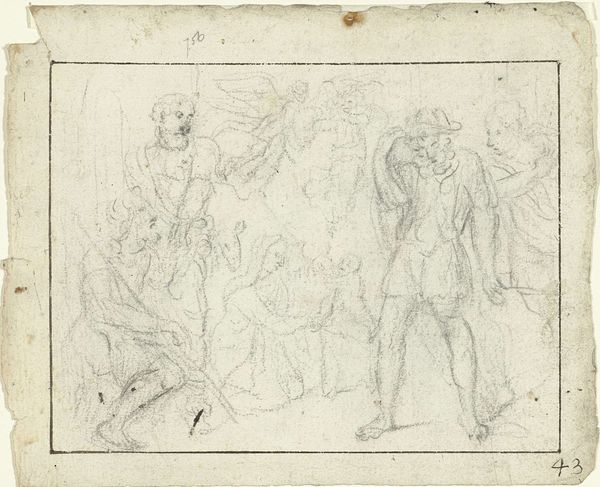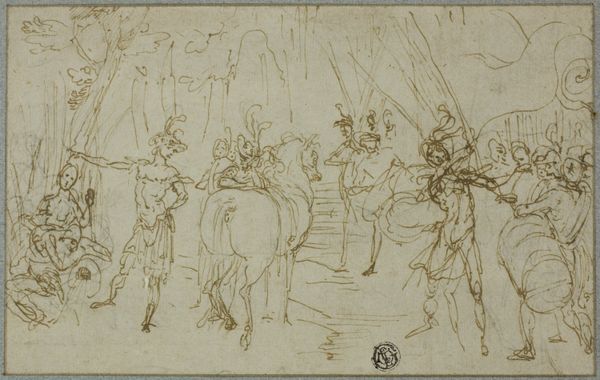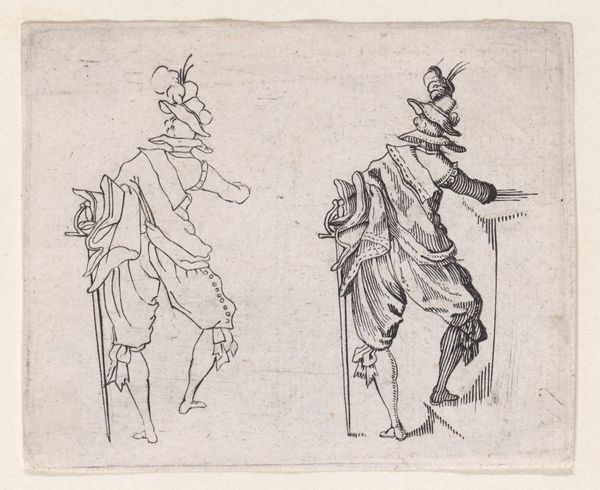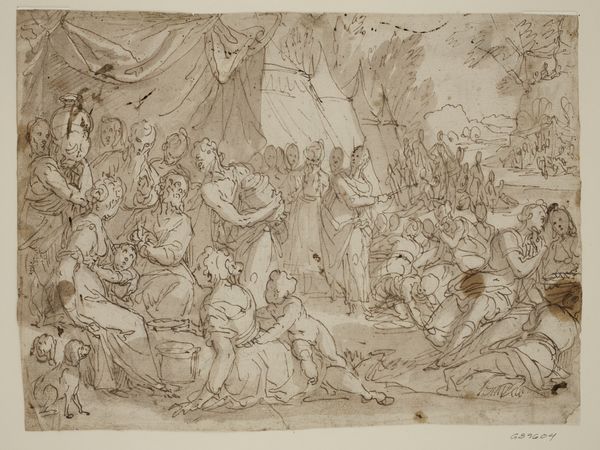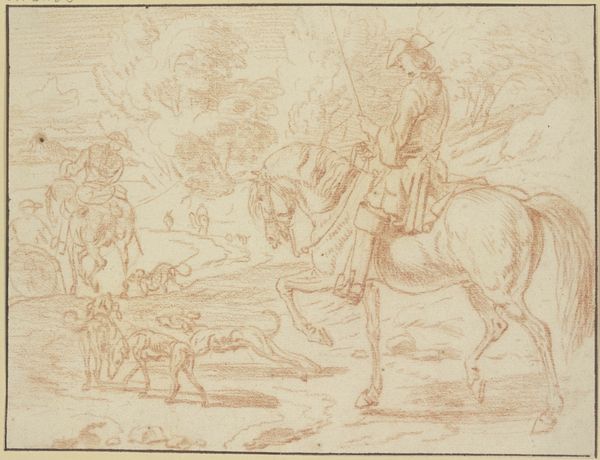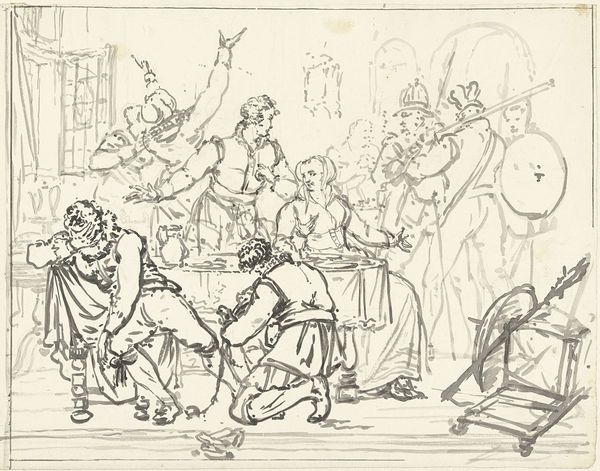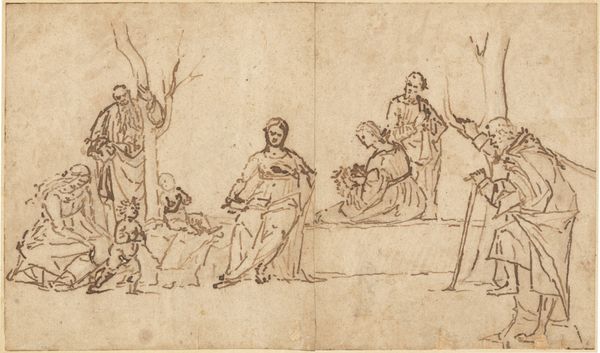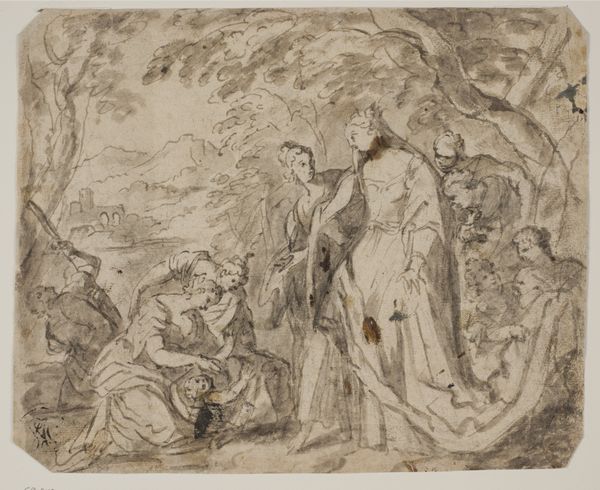
En kronet mandsfigur viser sine genitialia frem midt i en skare af siddende og stående kvinder 1743 - 1809
0:00
0:00
drawing
#
drawing
#
classical-realism
#
figuration
#
history-painting
#
academic-art
#
nude
Dimensions: 243 mm (height) x 405 mm (width) (bladmaal)
Editor: Here we have Nicolai Abildgaard’s drawing, created sometime between 1743 and 1809, titled, "A crowned male figure displays his genitalia amidst a group of seated and standing women." It's currently at the SMK - Statens Museum for Kunst. My first reaction is… awkwardness. It's a classical scene, but that central figure throws the whole thing off. How do you interpret this work? Curator: Awkward, yes, but perhaps deliberately so! Think of it as a potent brew of power, sexuality, and… well, the theatre of it all. Abildgaard was working in a time of immense social upheaval. Artists began questioning authority, the supposed divine right of Kings! How better to satirize it than showing the 'divine' so blatantly, surrounded by the almost performative reactions of the women? What do you make of the women’s expressions? Do they read as shock? Or perhaps something else entirely? Editor: Some look bored, honestly. Others look genuinely surprised. It’s this mix that makes it so strange. It almost feels…modern? In its cynicism? Curator: Precisely! And the style - classical realism with academic art leanings. A solid foundation subverted by a playful iconoclasm. It’s like he's saying, "Here's the ideal…now look at *this*!" Think of the drawing as a stage—Abildgaard enjoyed theatre, even designed sets. Is he making us, the viewers, complicit in this performance? The voyeurs of power stripped bare – literally? Editor: That’s a very good point, the voyeur aspect didn’t immediately occur to me. And seeing it as a piece of political satire, suddenly gives this very strange drawing some… well, not exactly gravitas, but… intent! Curator: Indeed. Art isn’t always about beauty, sometimes it is about poking at what we think is beautiful, or powerful, or sacred. Editor: Well, I’ll definitely look at classical art differently now!
Comments
No comments
Be the first to comment and join the conversation on the ultimate creative platform.
